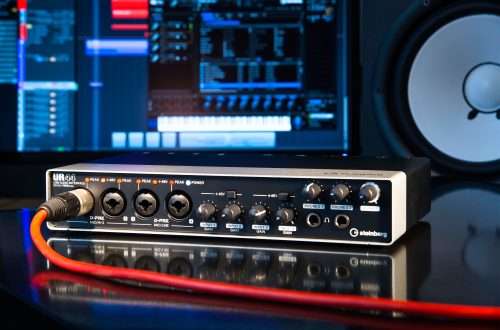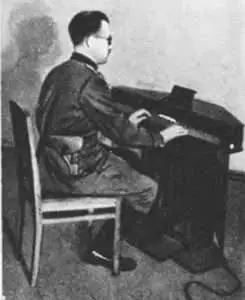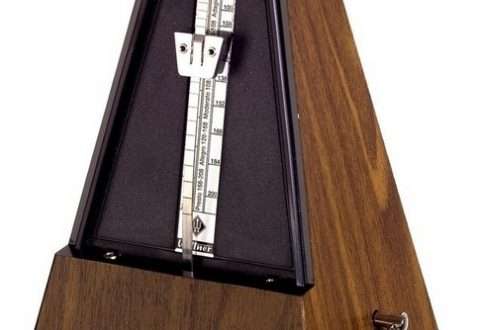
Trumpet history
Trumpet refers to wind musical instruments. Among the brass, it is the highest in sound. The material for the manufacture of pipes is copper or brass, sometimes they are made of silver and other metals. Pipe-like instruments have been known to man since ancient times. Already in the period of antiquity, the technology for making pipes from a single sheet of metal was known.  In the countries of the ancient world and much later, for many centuries, the pipe played the role of a signal instrument. In the Middle Ages, there was a special position of a trumpeter in the armies, who, using signals, transmitted the orders of the commander to those military units that were at a considerable distance. There was a special selection of people who were later taught to play the trumpet. In the cities there were tower trumpeters who, with their signal, informed the townspeople about the approach of a cortege with a high-ranking person, a change in the time of day, the approach of enemy troops, a fire or other events. Not a single knightly tournament, holiday, festive procession could do without the sound of trumpets, signaling the start of ceremonial events.
In the countries of the ancient world and much later, for many centuries, the pipe played the role of a signal instrument. In the Middle Ages, there was a special position of a trumpeter in the armies, who, using signals, transmitted the orders of the commander to those military units that were at a considerable distance. There was a special selection of people who were later taught to play the trumpet. In the cities there were tower trumpeters who, with their signal, informed the townspeople about the approach of a cortege with a high-ranking person, a change in the time of day, the approach of enemy troops, a fire or other events. Not a single knightly tournament, holiday, festive procession could do without the sound of trumpets, signaling the start of ceremonial events.
The golden age of the trumpet
In the Renaissance, the technology of making pipes became more perfect, the interest of composers in this instrument grew, and the parts of the pipes were included in the orchestra. Many experts consider the Baroque period to be the golden age for the instrument. In the era of classicism, melodic, romantic lines come to the fore, natural pipes go far into the shadows. 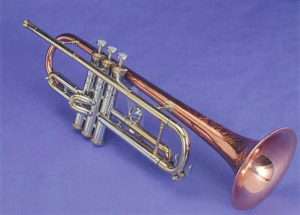 And only in the 20th century, thanks to the improvement in the design of the instrument, the amazing skill of trumpeters, the trumpet often performs as a solo instrument in orchestras. It gives the orchestra an unusual elation. Thanks to the bright, brilliant timbre of the instrument, it is beginning to be used in jazz, ska, pop orchestra, and other genres. The whole world knows the names of outstanding solo trumpeters, whose filigree skills will always shake human souls. Among them: the brilliant trumpeter and vocalist Louis Armstrong, the legendary Andre Maurice, the outstanding Russian trumpeter Timofey Dokshitser, the amazing Canadian trumpet master Jenes Lindemann, the virtuoso performer Sergei Nakaryakov and many others.
And only in the 20th century, thanks to the improvement in the design of the instrument, the amazing skill of trumpeters, the trumpet often performs as a solo instrument in orchestras. It gives the orchestra an unusual elation. Thanks to the bright, brilliant timbre of the instrument, it is beginning to be used in jazz, ska, pop orchestra, and other genres. The whole world knows the names of outstanding solo trumpeters, whose filigree skills will always shake human souls. Among them: the brilliant trumpeter and vocalist Louis Armstrong, the legendary Andre Maurice, the outstanding Russian trumpeter Timofey Dokshitser, the amazing Canadian trumpet master Jenes Lindemann, the virtuoso performer Sergei Nakaryakov and many others.
The device and types of pipes
Essentially, a tube is a long, cylindrical tube that has been bent into an elongated oval shape for compactness. True, at the mouthpiece it narrows a little, at the bell it expands. When manufacturing a pipe, it is very important to correctly calculate the degree of expansion of the socket and the length of the pipe. 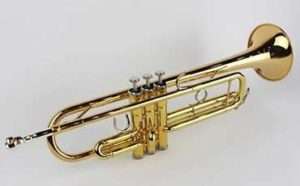 To reduce the sound, there are three valves, in some varieties (piccolo trumpet) – four. The valve mechanism allows you to change the length of the air column in the pipe, which, together with a change in the position of the lips, allows you to get harmonic consonances. When extracting sound, the playing qualities of the mouthpiece are important. When playing the trumpet, the instrument is supported on the left, the valves are pressed with the right hand. Hence, the pipe is called a right-handed instrument. Most bands today play B-flat trumpets, 4,5 feet long. Among the varieties are: the alto trumpet, rarely used today; out of use since the middle of the 20th century bass; small (piccolo trumpet), which is experiencing a new upsurge today.
To reduce the sound, there are three valves, in some varieties (piccolo trumpet) – four. The valve mechanism allows you to change the length of the air column in the pipe, which, together with a change in the position of the lips, allows you to get harmonic consonances. When extracting sound, the playing qualities of the mouthpiece are important. When playing the trumpet, the instrument is supported on the left, the valves are pressed with the right hand. Hence, the pipe is called a right-handed instrument. Most bands today play B-flat trumpets, 4,5 feet long. Among the varieties are: the alto trumpet, rarely used today; out of use since the middle of the 20th century bass; small (piccolo trumpet), which is experiencing a new upsurge today.



